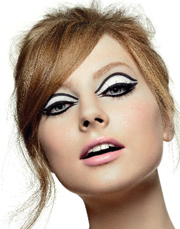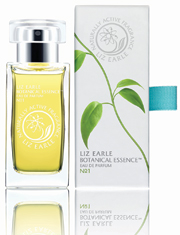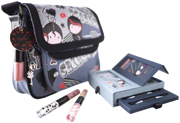Despite a slowdown in growth, the UK beauty market has proved resilient with brands turning to untapped niches and retailers looking to capitalise on the sector’s success among FMCG categories
It would be fair to say that the UK has not experienced the easiest of years. With the will-they-won’t-they prospect of a general election looming large for much of late 2009 it was little wonder that the region’s consumers remained cautious.
The personal care market was not exempt from such caution. Euromonitor International figures show that several years of economic instability have taken their toll on consumer spend; personal care sales in the UK grew just 2.5% in 2009 to reach £9,644.8m, a significantly smaller increase than in 2008 when the market grew 3.5%.
But in spite of this evident slow-down Euromonitor research analyst Zaena Miller notes that the UK’s cosmetics and toiletries sector continued to outperform most other FMCG areas. If British consumers are indeed budgeting then they are clearly cutting back less from their cosmetics and toiletries spend than from other areas.
Miller explains: “During a recession women want to look good. When women are stressed it can really affect their skin, so they invest in skin care and make-up. Also power dressing is used as a way of keeping job security and make-up is a key part of looking professional in the workplace.”
In addition, both imports and exports of cosmetics and toiletries grew at a significant rate, according to the UK’s personal care industry association CTPA, which quotes statistics from uktradeinfo.com. Imports to the UK amounted to £2,535m, up 8.1% on 2008 with France providing the bulk of this (£641.3m), and while exports (£2,544m) didn’t quite match import value they were nevertheless up 5.4% year on year, suggesting that 2009 was a mixed year for the UK’s beauty industry.
Distribution developments
As far as retail channels were concerned, supermarkets continued to encroach on pharmacies’ territory attracting consumers with special offers on toiletries and enabling them to save on time and effort by merging their personal care shop with their grocery one. Features like photo processing, once the domain of pharmacies, but now offered in many of the larger grocers, lured people away from pharmacies and into supermarkets, which in turn boosted the likelihood of them purchasing shampoo in Asda as opposed to Superdrug.
And supermarkets are expanding their horizons beyond toiletries. According to Kantar Worldpanel, both Tesco and Asda were among the top ten retailers of cosmetics – under which Kantar places colour cosmetics, palettes and make-up accessories – more traditionally distributed via pharmacies and department stores.
“Supermarkets are tapping into a new growth area,” says Miller. “During the recession they’ve seen that beauty has been the most resilient category and if other FMCG product categories are suffering they are going to look for ways to offset their losses in weaker areas.”
In November, the UK’s largest supermarket chain Tesco opened an in-store area dedicated to beauty at a Tesco Extra branch, with fragrance counters launched in all Tesco Extra stores the following month.
“To dedicate a whole shop area to beauty shows that Tesco is really focusing on this area and if it’s a success I would not be surprised if other supermarkets do a similar thing,” says Miller.
Although growth within premium cosmetics has slowed somewhat, the sector still performed well enough for high-end retailers to remain optimistic. According to David Walker Smith, director of beauty at Selfridges: “[Customers] want value in their products and are willing to spend more for investment with premium brands that they know and trust. They want a piece of luxury from premium brands and by buying a Chanel nail lacquer they can do just this.”
Major players also continued to take advantage of the benefits of online retail. Selfridges, for example, launched selfridges.com in early 2010. “There is a huge demand for instant access to brands especially with exclusive launches,” says Walker Smith. “When Tom Ford launched his range of lipsticks, Selfridges.com offered customers the chance to buy at 3am in the morning – well before store opening hours. This is the ultimate benefit of the website to our customers.”
In addition to online retail, which accounted for 5.4% of cosmetic and toiletry sales in 2009, home shopping (2.3%) and direct selling (4.5%), the UK’s traditional personal care retail distribution routes saw increased competition from more unusual quarters. A natural progression of its decision to launch Dr Organic in 2009, health products chain Holland & Barrett recently piloted a concept store featuring a dedicated space for natural cosmetics and toiletries brands called H&Be Naturally Beautiful. The retailer has said it will use this as a blueprint for future outlets, if it proves a success.
| Table 1: Retail breakdown of UK C&T market, 2009 | ||
| Size £m | % change 08/09 | |
| Beauty & personal care | 9644.8 | 2.5 |
| Baby care | 154.6 | 2.7 |
| Bath & shower | 767.7 | 3.1 |
| Colour cosmetics | 1386.9 | 4.1 |
| Deodorants | 827.4 | 2.4 |
| Depilatories | 145.3 | 2.5 |
| Fragrance | 959.0 | 3.2 |
| Hair care | 1327.1 | 1.0 |
| Men's grooming | 858.2 | 3.0 |
| Oral care | 881.0 | 1.6 |
| Skin care | 1971.0 | 4.3 |
| Sun care | 346.9 | -0.1 |
| Sets/kits | 484.6 | -0.3 |
| Premium cosmetics | 2526.5 | 2.8 |
| Source: Euromonitor International | ||
| Table 2: UK C&T distribution retail value, 2009 | ||
| Channel | % breakdown | |
| Store based-retailing | 87.7 | |
| Grocery retailers | 36.9 | |
| Non-grocery retailers | 50.8 | |
| Health & beauty retailers | 44.1 | |
| Mixed retailers | 6.6 | |
| Outdoor markets | 0.1 | |
| Non-store retailing | 12.3 | |
| Direct selling | 4.5 | |
| Home shopping | 2.3 | |
| Internet retailing | 5.4 | |
| Vending | 0.1 | |
| Total | 100 | |
| Source: Euromonitor International | ||
The own brand revolution
Ongoing consumer trade-down within certain sectors has created an opening for private label in recent years and activity on this front continued apace with several UK retailers launching or enhancing their own brand portfolios.
Boots aimed to appeal to the older woman with its No7 Lift & Luminate range, which tapped into the popularity of No7’s Protect & Perfect serum boasting some of the same active ingredients (white lupin and peptides) and including the brand’s first foundation for mature skin.
Superdrug targeted another common issue, sensitivity, launching Simply Pure. None of the range’s six products contain fragrance or parabens making them suitable for use on sensitive skin. The pharmacy chain also launched Makeup Academy, comprising lipsticks, glosses, eyeshadows, mascaras, eye liners, blush, powder and nail polish costing just £1 per item.
Meanwhile Poundland (Britain’s answer to the US dollar store) also gave women the opportunity to fill their make-up bag for under £10 by unveiling own label make-up brand Chit Chat.

MUA products sell for £1 each
For those who weren’t counting the pennies, but still craved value for money, fashion retailer Topshop launched its much anticipated colour cosmetics line, Topshop Make Up. According to Topshop’s managing director Mary Homer, the range’s positioning is masstige but affordable with products ranging from £4 to £12.
Not to be outdone, British high street icon Marks & Spencer is increasing its focus on personal care unveiling its first beauty advertising campaign, in this instance for Anti-wrinkle Formula Age Repair Ceramide Collagen Serum, to coincide with the re-launch of its Formula skin care line.
| Table 3: UK C&T brand share 2009, top ten | |
| Brand | Company |
| Private label | Private label |
| Gillette | Procter & Gamble Co, The |
| L’Oréal Paris | L’Oréal Groupe |
| Boots | Alliance Boots Plc |
| Avon | Avon Products Inc |
| Nivea | Beiersdorf AG |
| Garnier | L’Oréal Groupe |
| Colgate | Colgate-Palmolive Co |
| Estée Lauder | Estée Lauder Cos Inc |
| Lynx | Unilever Group |
| Source: Euromonitor International | |
An acquisitive eye
2009/10 also bore witness to the acquisition of several UK brands by large multinational parent companies. This April, UK brand Liz Earle Naturally Active Skincare joined Avon’s product portfolio, while Alberto Culver brought Simple Health & Beauty from private equity fund Duke Street for £240m. In addition, UK-based brand owner KMI Brands acquired natural personal care brand Naked.
“In November 2009 Mintel Beauty Innovation announced we expected to see more consolidation in the industry in 2010,” said the market research company’s senior beauty analyst Nica Lewis. “So far a number of major players – Shiseido, Avon, Alberto Culver – have bought specialist beauty brands to grow their portfolio into different categories such as mineral make-up and natural beauty. Likewise there is consolidation in the supply chain as Univar, Rhodia and Greentech acquire smaller players.”
“Small niche cosmetics are really growing very fast because they haven’t yet reached a level of maturity,” explains Miller. “And small cosmetics brands often have a higher degree of consumer loyalty, especially natural brands – it’s one of the best ways to drive growth in a mature market.”
At the same time as enabling major players to gain a foothold in niche product categories, acquired companies gain the opportunity to expand both in terms of their product portfolio and geographical presence – tougher to do during a period of recession.
Miller confirms: “The main benefit for the niche company is that it will have the investment to help it grow,” citing the nationwide expansion plans for Sanctuary spas, acquired by PZ Cussons in 2008, as an example. “It enables the smaller company to grow rapidly and to reach a wider audience, and that in turn could raise awareness of certain issues if it is a green or ethical company,” she adds.
However, Miller believes that brands considering the acquisition route should heed lessons learned from L’Oréal’s high profile 2006 acquisition of The Body Shop: “Across the board, large companies will buy green or ethical brands to boost their PR, but consumers are wising up to companies using green-washing as a PR tool. L’Oréal’s acquisition of The Body Shop led to a lot of negative press, as L’Oréal is part owned by Nestlé, which is highly unpopular with ethical campaigners.”
Toughing it out
When it came to product sectors, the region’s sun care market fared especially poorly, slipping -0.1% to £346.9m. According to Miller, the sector was a casualty of both the economic downturn, which reduced the volume of British holidaymakers, and 2009’s largely sun-free summer: “The British weather last year was pretty bad, which may have had an effect and if people aren’t going on holiday that would have hit the sun care market too.”
Additionally, trade-down by consumers hit sun care harder than other areas. “There are also a lot of promotions and own brand products for consumers to take advantage of,” says Miller. “Sunscreen is a functional product that doesn’t affect the way you look so the benefits of a high-end sunscreen are less tangible than that of a mascara or a skin cream.”
Beauty sets and kits also fell out of favour with UK consumers, who were less inclined to pay more money for less product, however convenient the format, or however suitable for gifting. Nevertheless, British spa brand Elemis (Steiner Leisure) demonstrated its faith in customer demand for beauty kits by launching Travel Shop, an online retail site offering 40 Elemis products in travel sizes, through retailer timetospa.co.uk.
On the up
In contrast, skin care grew 4.3% in 2009 to reach £1,971m making it the beauty world’s biggest success story in recent months. Miller believes this is due to a trend towards masstige skin care products. “The growth of masstige has been accelerated by the recession,” she notes, citing the continued popularity of Procter & Gamble’s Olay and Boots No7 Protect & Perfect as examples. “Masstige has had its biggest growth in skin care while premium has suffered – although it’s not in decline and there is still demand for premium skin care products. There’s a stronger degree of brand loyalty within skin care and if someone has a strong skin care regime and they need to cut back they will make sacrifices in other areas.”
The UK’s skin care specialists have also been quick to recognise that this is one area where women will not trade down, with several mid to high-end brand launches in 2009 and 2010. UK-based facialist Emma Hardie brought out an eponymous line retailing between £10 and £30 while new British brand Oskia – ranging from £29.50 to £74 – claimed to benefit skin from the inside out via its line comprising six products and a food supplement.
Likewise, colour cosmetics performed well in 2009, increasing 4.1% to £1,386m.
Sean Smith, director of mymarketmonitor.com, which tracks the progress of industries and individual brands through their media presence, noted: “In 2006 cosmetics accounted for just a fifth of editorial beauty coverage, now it makes up one third of all editorial and there are two reasons for this. The first is because the cosmetics sector is driven by mass market brands, and the recent financial crisis has suited mass market brands – it’s the lipstick effect.”

“The other reason is the popularity of Lady Gaga, for example, who has a very heavily made-up look. There’s been a shift of focus away from classic movie star make-up as seen on celebrities like Kate Winslet.”
Within colour cosmetics nail polish proved a particular growth area as many salon-goers switched to at-home manicures and women on reduced fashion budgets discovered a cheap and cheerful way to keep in vogue.
Mineral make-up remained a common sight in UK stores with almost every major brand offering a variation on the mineral foundation theme. But now the trend has filtered into other areas of the market. Unilever recently launched Sure Natural Minerals, featuring roll-on and aerosol anti-perspirants in two fragrance options, while The Body Shop introduced DeoDry, a new range of stick and roll-on deodorants as well as roll-on refills, which contain a unique volcanic mineral and no aluminium salts.
However, Miller warns of potential consumer backlash against green-washing, when it comes to minerals. “A lot of companies are trying to market mineral products as natural when they contain synthetic ingredients,” she says. “Companies risk consumers wising up to the fact that this can be used as a marketing tool, but I’m not sure if consumers are aware of it yet.”
Scenting success?
The fragrance market increased an impressive 3.2% in 2009 and recent months have seen several British brands make their first venture into fragrance. According to Liz Earle, the debut of Botanical Essence No.1, which launched last year, was particularly significant for the brand as fragrance has long been one of its most frequently requested product suggestions.
“It was very important to us that our fragrance was as natural as possible so that it sits comfortably alongside the Naturally Active Skincare range,” Earle told SPC. “Botanical Essence No.1 is over 98% directly derived from natural ingredients and with our fragrance the wearer is a critical component – their skin will change the notes, enhancing the scent as it develops and matures in a way that is completely bespoke. Being 98% directly derived from natural ingredients is critical in achieving this.”

Liz Earle Naturally Active Skincare, which recently debuted its first scent, is one of several British brands acquired by major players this year
In addition, Elemis launched a debut fragrance, Elemis Eau de Parfum, while fashion brand Orla Kiely has partnered with KMI to create a fresh, floral signature fragrance. Finally, designer Tabitha Somerset Webb and TV personality Danii Minogue launched a signature scent named after their co-owned fashion brand Project D.
But Sean Smith warns that the sector could face tougher times ahead. “In early 2009 a lot of brands brought out new faces for their fragrances, which was used to drive exposure. We suspect we may see a decrease in fragrance editorial this year; the sector is typically harder to drive editorial about and relies on newness and special editions.”
Famous faces
But the cult of celebrity continued to gain momentum in the UK with several multinational beauty brands featuring British celebrities in their advertisements. L’Oréal Paris has used singer Cheryl Cole to front campaigns for Elvive Full Restore 5, L’Oréal Feria Colour and GlamShine Reflexion lip-gloss since signing her last August, as well as putting the pop star’s likeness on limited edition cans of Elnett Satin. Meanwhile Rimmel (Coty) added Georgia May Jagger to its line-up of models. More recently Lacoste (P&G) announced British TV presenter Alexa Chung as the face of its latest fragrance, due in 2011.
Whether UK consumers are beginning to tire of the celebrity fragrance (as is often predicted) or not, 2009/10 saw no shortage of new celebrity scents. These included Peter Andre’s Unconditional – a women’s fragrance created by Robertet and released to coincide with singer Andre’s single of the same name – and a new seasonal edition of WAG Coleen Rooney’s signature scent.
Coty stable-mates Kate Moss and David Beckham also added new products to their respective fragrance portfolios, namely Kate Moss Wild Meadow and David Beckham Instinct Ice.
But while the beauty industry has long used models and film stars for promotional purposes, brands are increasingly enlisting experts to add weight to claims. “The celebrity make-up artist has become a popular topic recently,” says mymarketmonitor’s Smith. “Brands are getting make-up artists in as creative directors, who can contribute to editorial and who can generate media interest through involvement in awards ceremonies, such as the BAFTAs, or fashion shows. Lancôme and Shu Uemura have both hired celebrity make-up artists.”
Looking for growth potential
In mature markets brand owners are continually searching for areas with room for future growth and UK cosmetics and toiletries proved no exception. Male grooming continued to grow as brand owners took advantage of relatively unexploited sub-sectors. Newcomer Rockface, for example, claimed to bridge the gap between premium and mass market skin care for men while Bulldog became the first male grooming brand to offer fairtrade certified products.
England’s presence at the 2010 FIFA World Cup South Africa gave manufacturers the opportunity to sell themed personal care to fans. Beiersdorf capitalised on Nivea for Men’s status as the official supplier to the England football squad, launching a grooming kit featuring the three lions crest, while adidas (Coty) brought out a new edt and product range, adidas Pure Game, to celebrate the event.
P&G’s Sure, meanwhile, ran a Sure Men Last 8 Sweepstake, giving consumers the chance to win cash prizes via promotional coded cans and fellow P&G stable-mate Gillette tapped into the UK’s football fever with a limited edition St George’s Cross version of its Gillette Fusion razor.
Another area within male grooming that could prove lucrative is body sculpting, according to Miller. “Slimming and toning will be a huge area,” she tells SPC. “Drinks and protein supplements are all focused on men trying to be more muscular and slimming and toning are areas that men don’t necessarily associate with women, unlike skin care.”
Similarly, the past 12 months have heralded continued growth with regards to products for teens. Johnson & Johnson’s Neutrogena led the way within skin care, launching a two-speed version of its Neutrogena Wave and a Visibly Clear Pink Grapefruit range.
And British girls are now being offered a wider choice when it comes to colour cosmetics. In 2009, Ruby & Millie founders Ruby Hammer and Millie Kendall collaborated with Coolabi to create Scarlett & Crimson, a colour cosmetics range for teenagers. According to Kendall, the brand, which comprised 37 skus on launch, has helped fill the niche for a premier teen offering. “In the past, girls had to choose between cheap, bargain bin make-up or their mum’s old make-up,” says Kendall. “We asked ourselves, what does a 13-year-old girl with £10 (because a lot of girls will carry around that amount of money) want to buy? And we thought yes, they would want to buy an iconic eyeliner like our Punk Your Eyes one. We looked at what the market didn’t have and took it from there.”

Scarlett & Crimson has filled a niche for quality teen make-up in the UK
While Euromonitor’s Miller worries about the “risk of opposition amongst people arguing that children are growing up too fast” she adds: “Even before girls reach their teens most have played with their mother’s make-up. There could be a gap for something in between the costume make-up that girls wear in the house and adult make-up, something that they can wear outside.”
Scarlett & Crimson, says Kendall, does just that being “a girl’s first foray into make-up, but not an inappropriate one.
“Scarlett & Crimson [the characters on which the range is based] have a really good message,” she adds. “They’re best friends, they’ve experienced things that a lot of teenagers go through... they’re very diverse, but wholesome in a punky way.” Kendall notes that teen brands must appeal to parents too as “80% of cosmetics are still brought by parents for their kids”.
With Europe still reeling from the Greek euro crisis and the UK’s new coalition government predicting tough times ahead it seems unlikely that British consumers will really start splashing their cash again any time soon. But if retailers continue to seek opportunities in beauty and brands look to capitalise on the growth potential of niche sectors, chances are high that the UK cosmetics and toiletries market will remain one of the recession’s healthier survivors.
A new direction
British fashion retailer Topshop launched its first colour cosmetics line in May 2010. Managing director Mary Homer tells SPC what it takes to create an iconic make-up collection from an iconic fashion brand
The Topshop Make Up line was more than two years in development. We launched our core range and first trend collection simultaneously in May this year. The core range launched with 97 skus across four make-up product categories as well as accessories, launching at the end of June. This will update as the range grows of course with some colours being dropped and some being added. We plan to launch two trend collections per year.
I think that our reputation of having a certain fashion authority on the British high street gives us a big push into the market. Our customers trust us to deliver trends first, at a good price and excellent quality. We of course take these credentials into the beauty world but we need to prove ourselves within this most competitive of arenas and we realise we will make mistakes and learn along the way.
Selfridges is an ongoing partner of Topshop and when they invited us into their main beauty lounge of course we were incredibly flattered, likewise Colette in Paris. It does of course help set us apart from some of our competition. However, we never just consider, or compare ourselves with other high street retailers or lower priced brands; we strive to be amongst the best in everything we do. I certainly feel we can live with many of the best premium brand make-up ranges.





